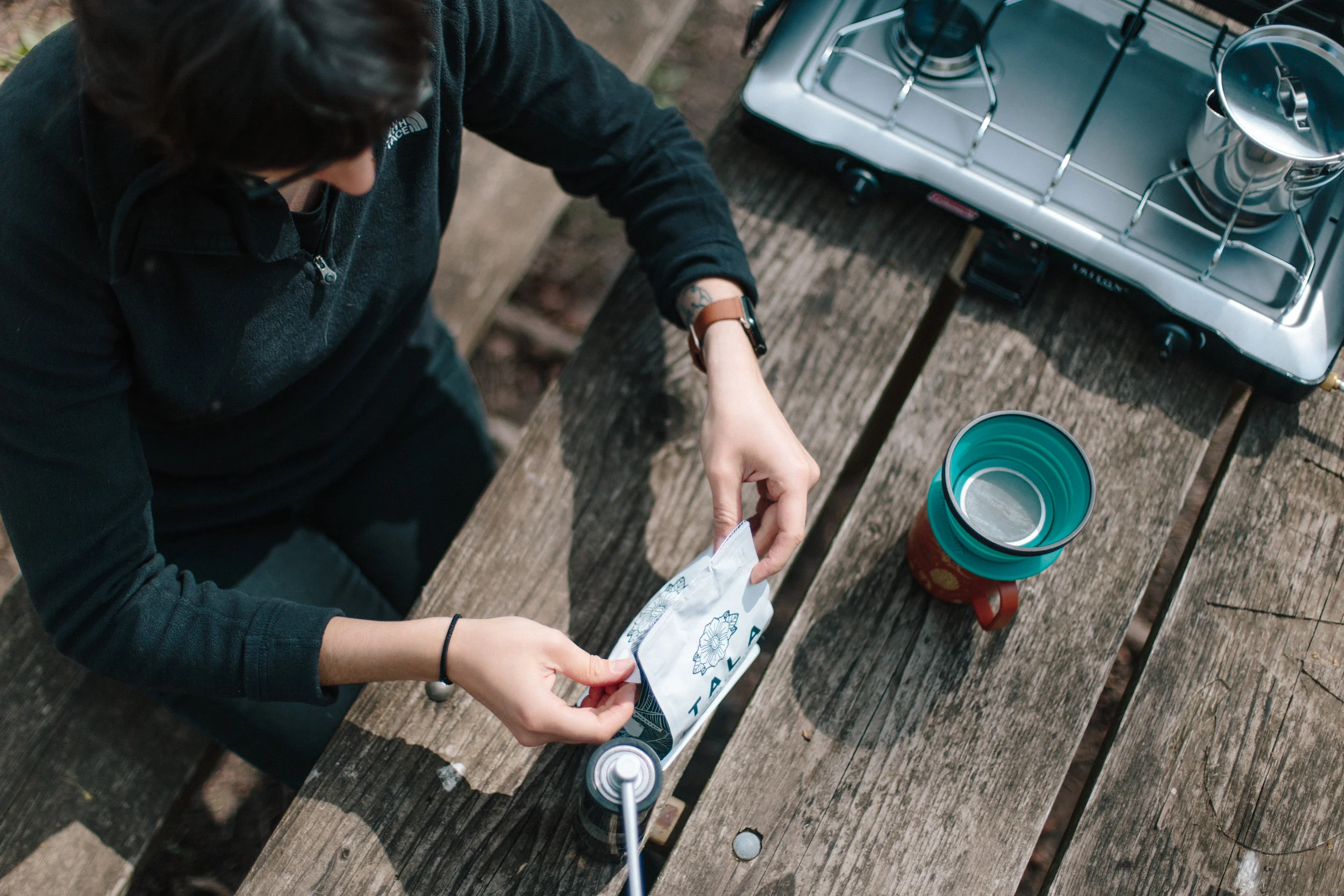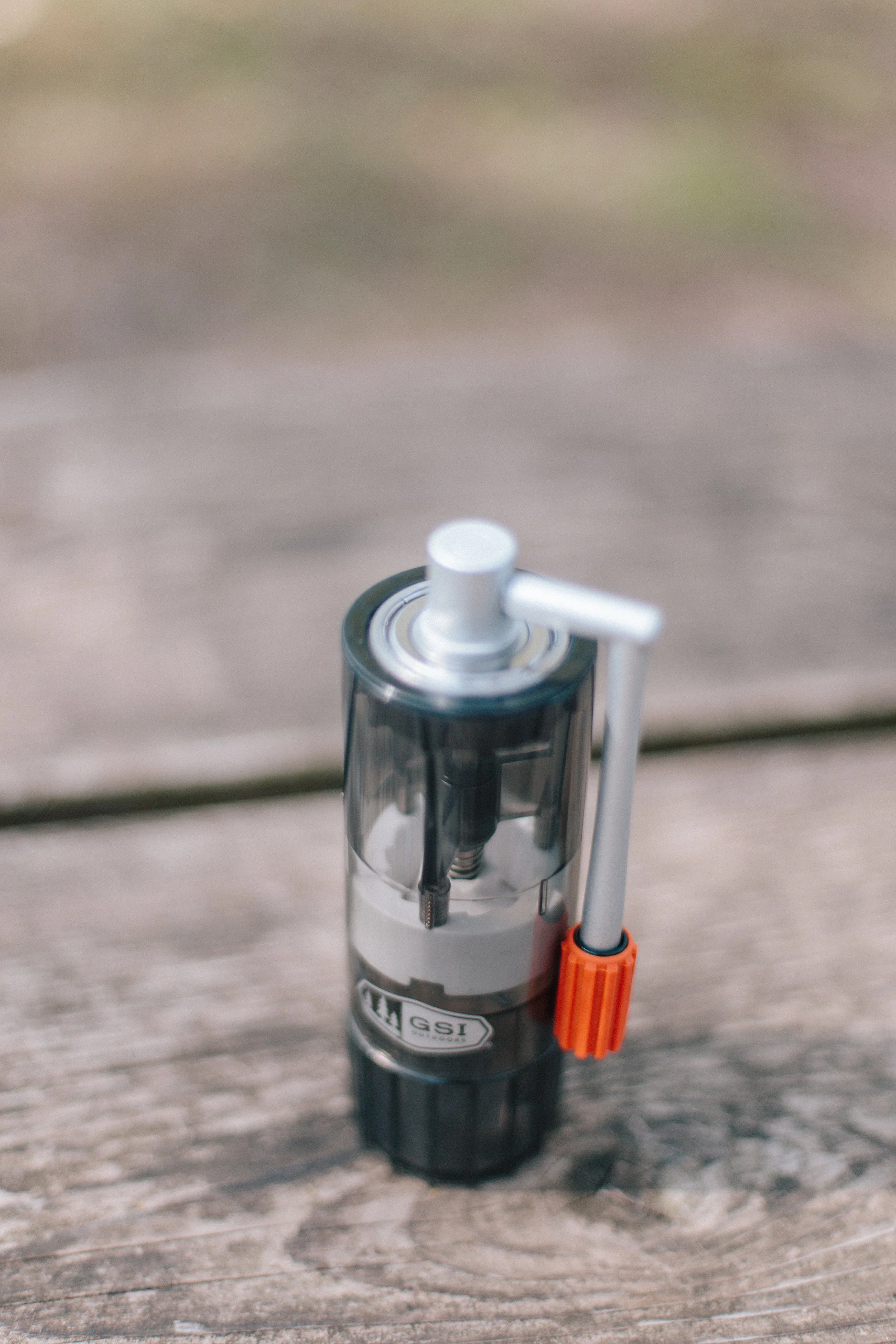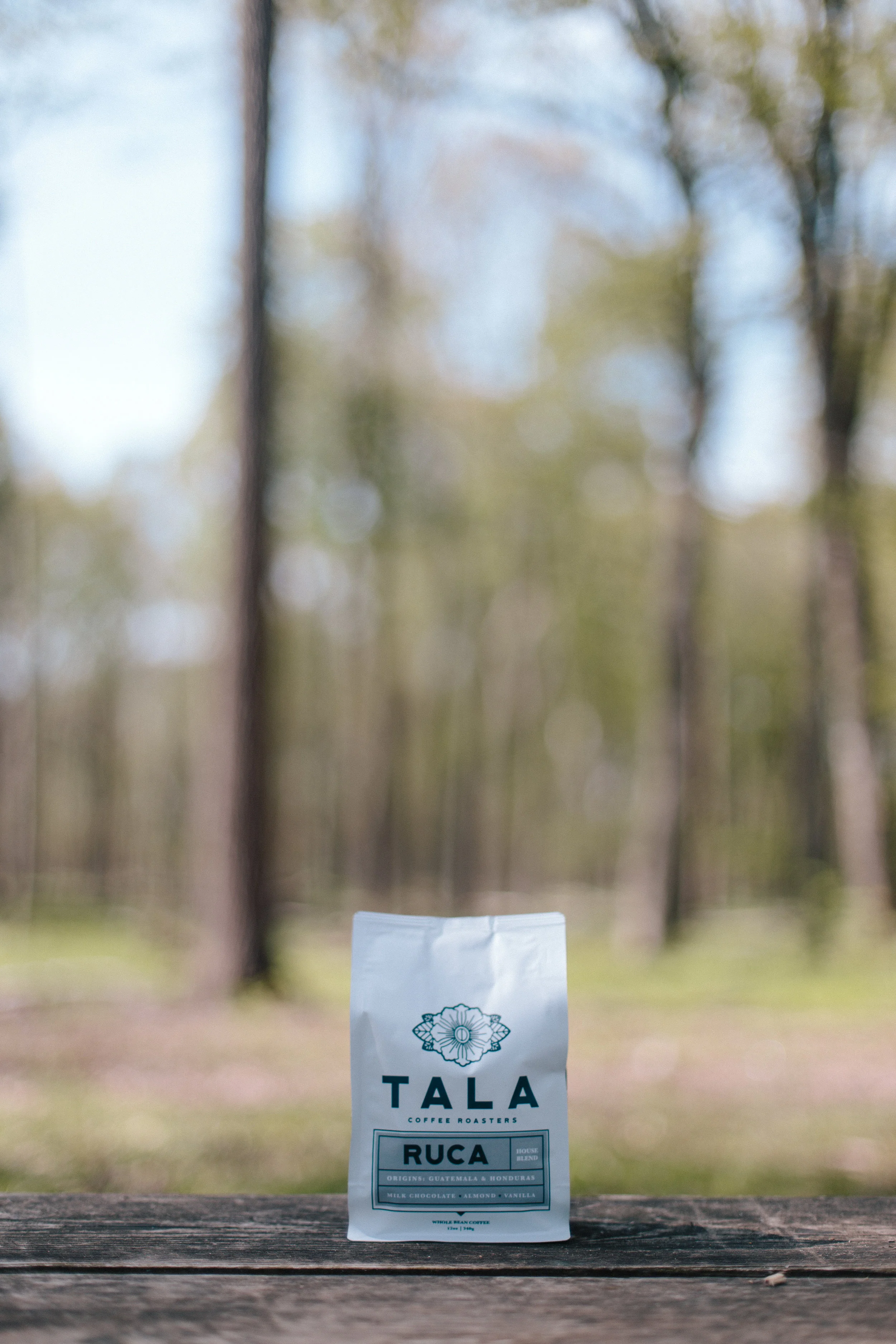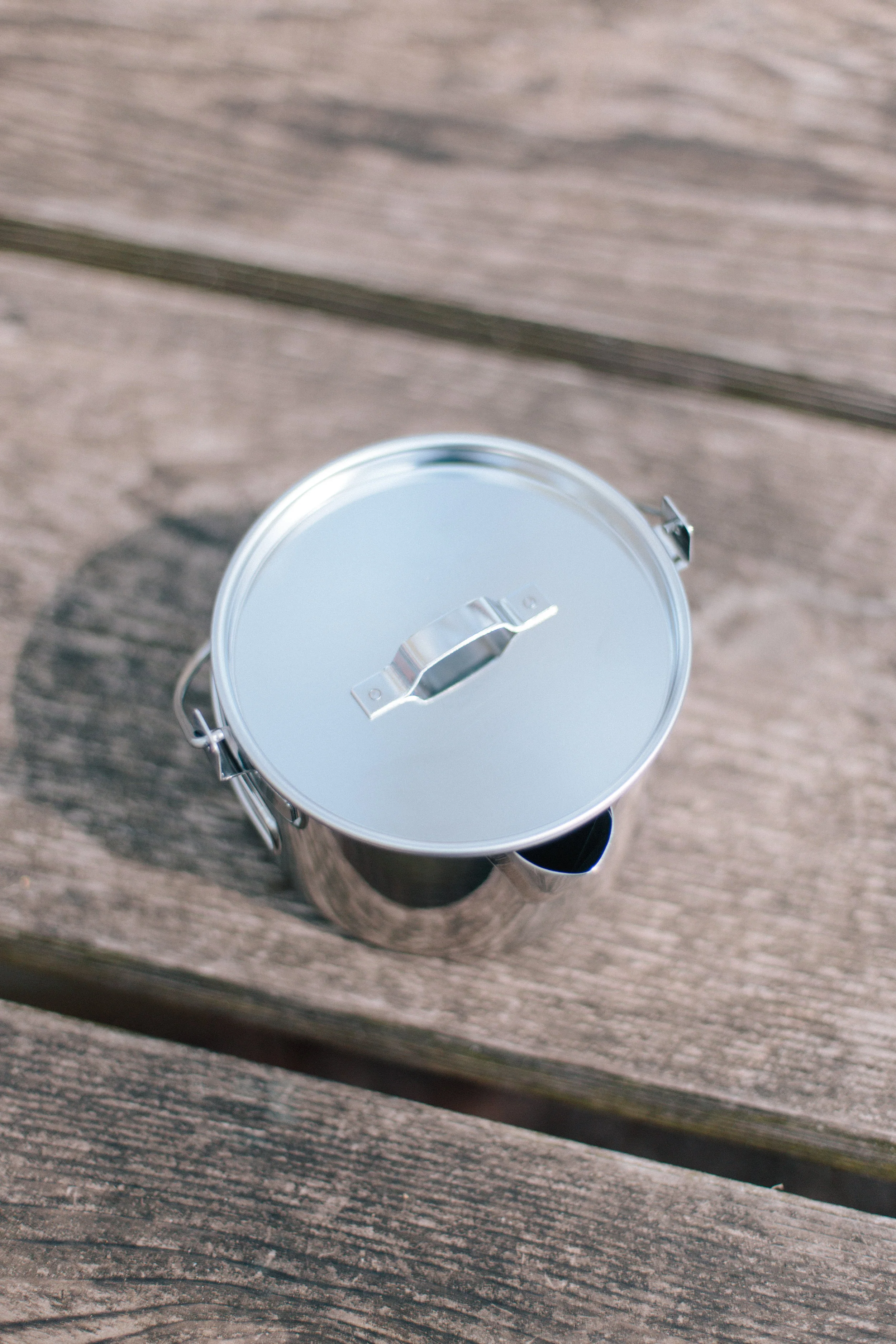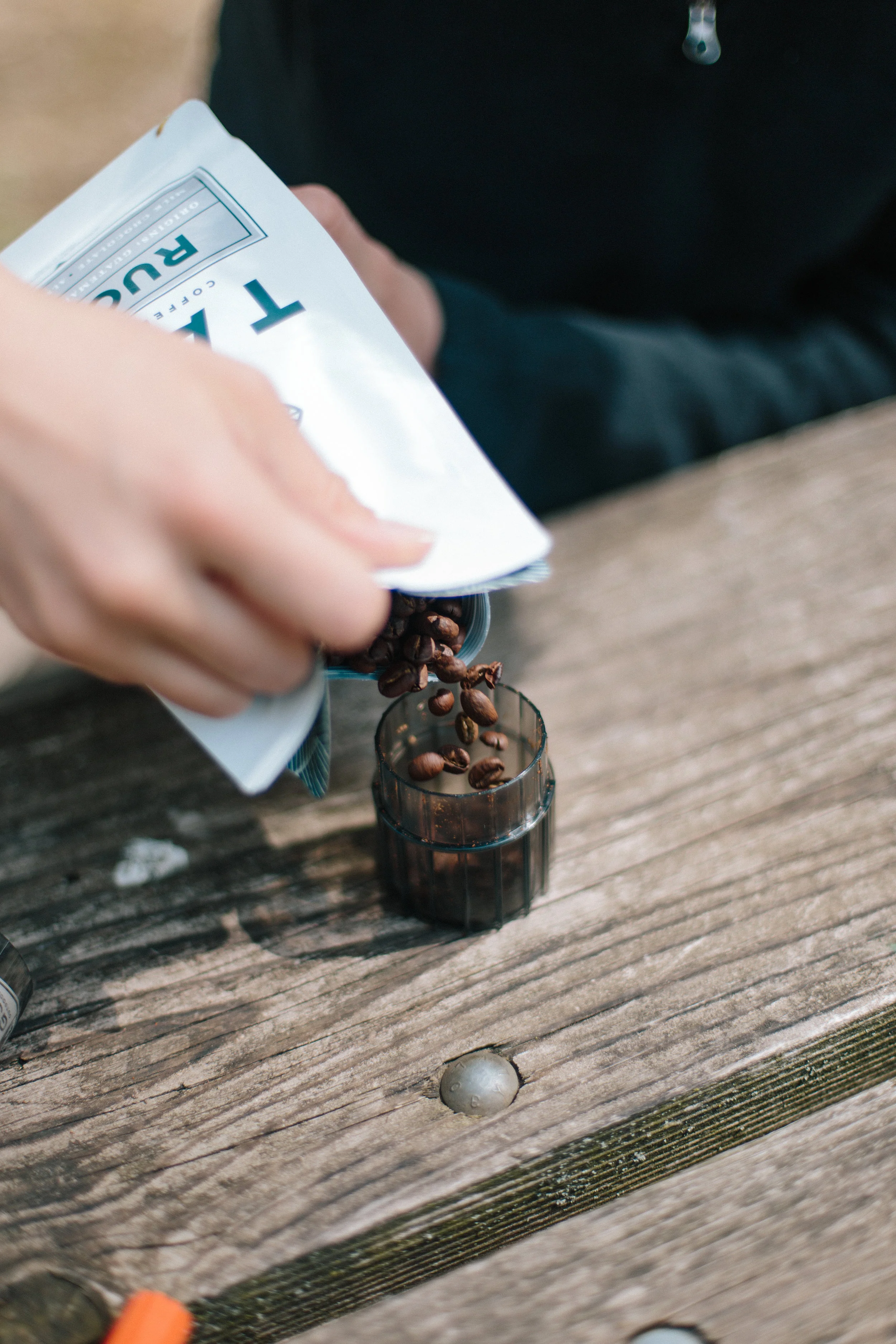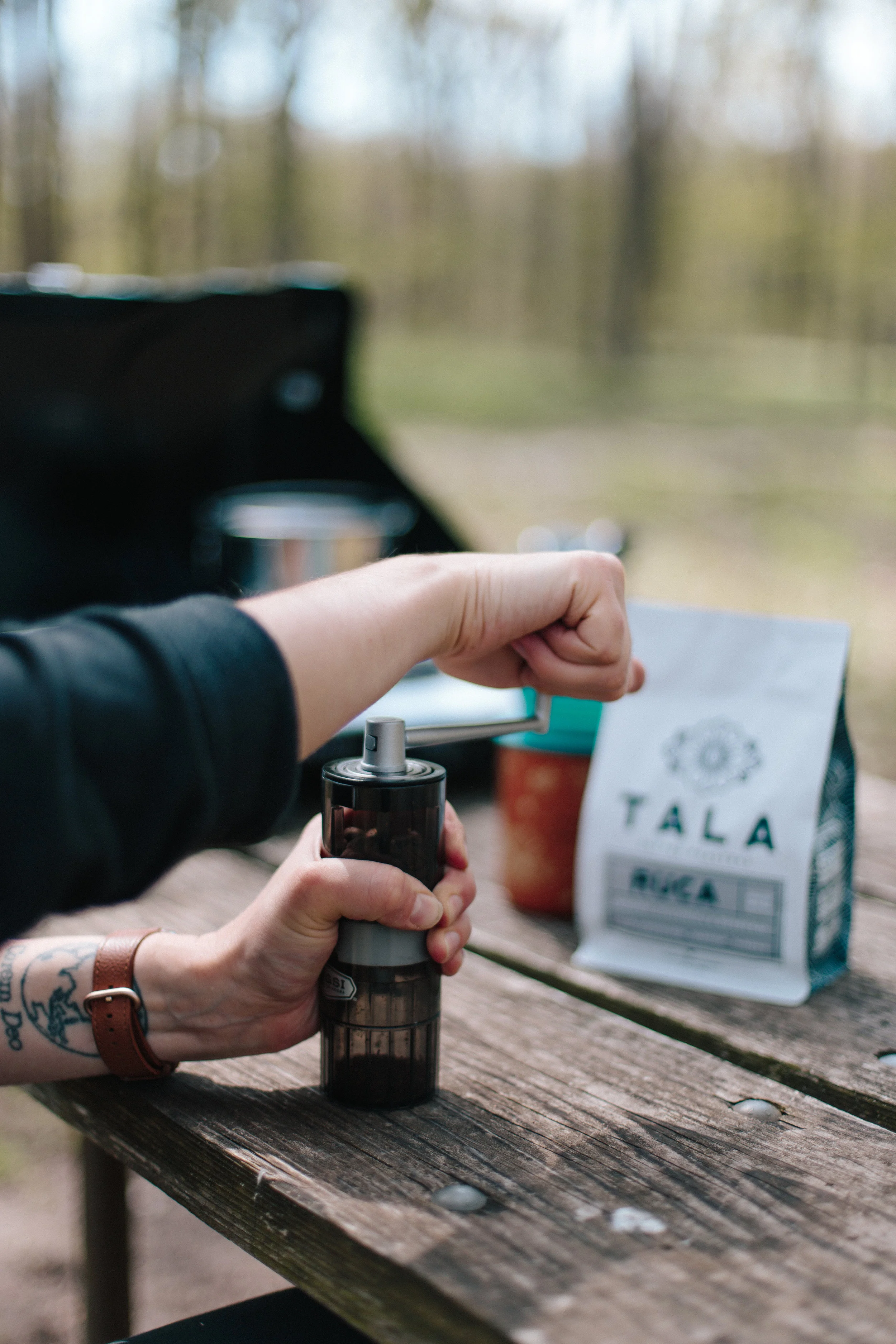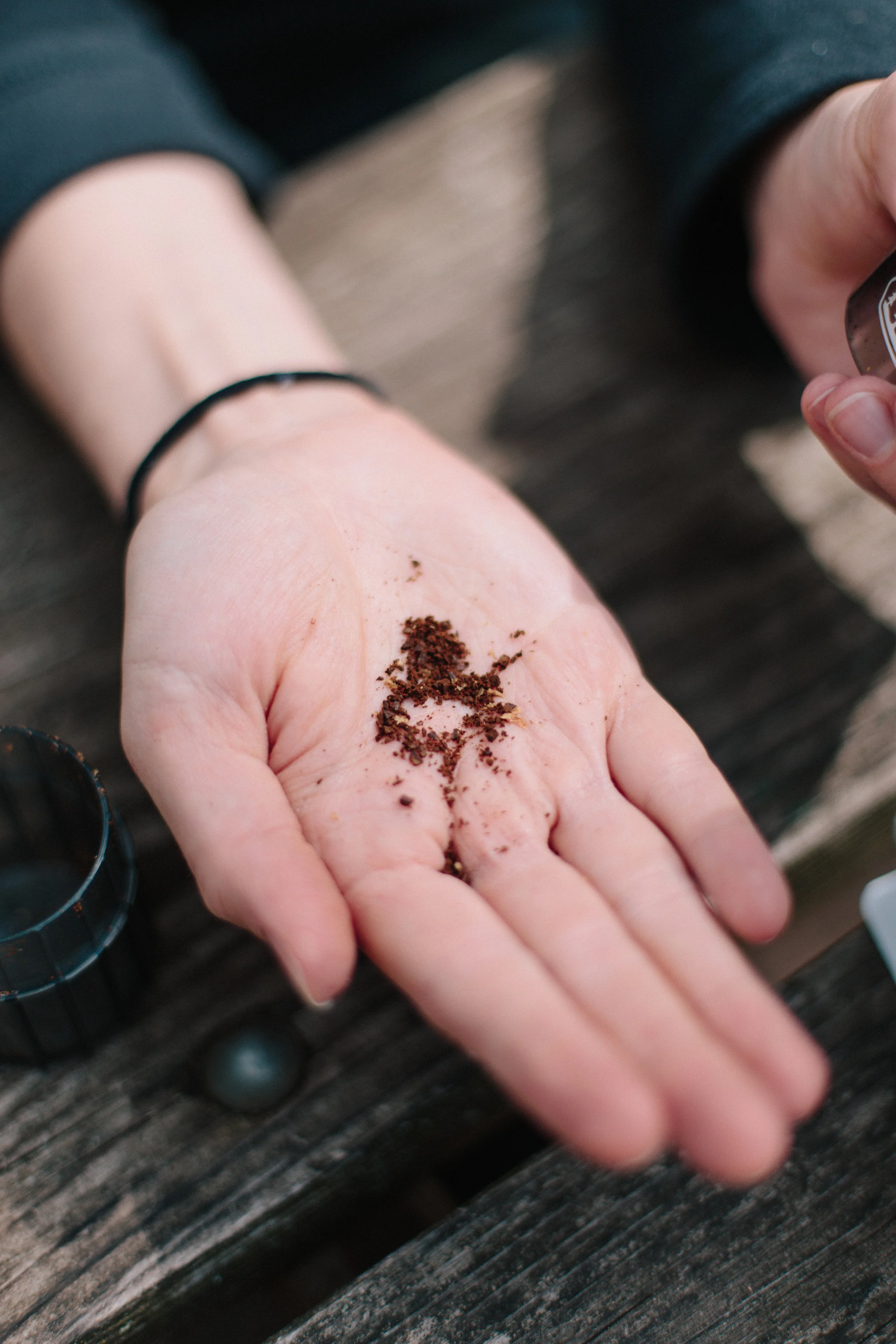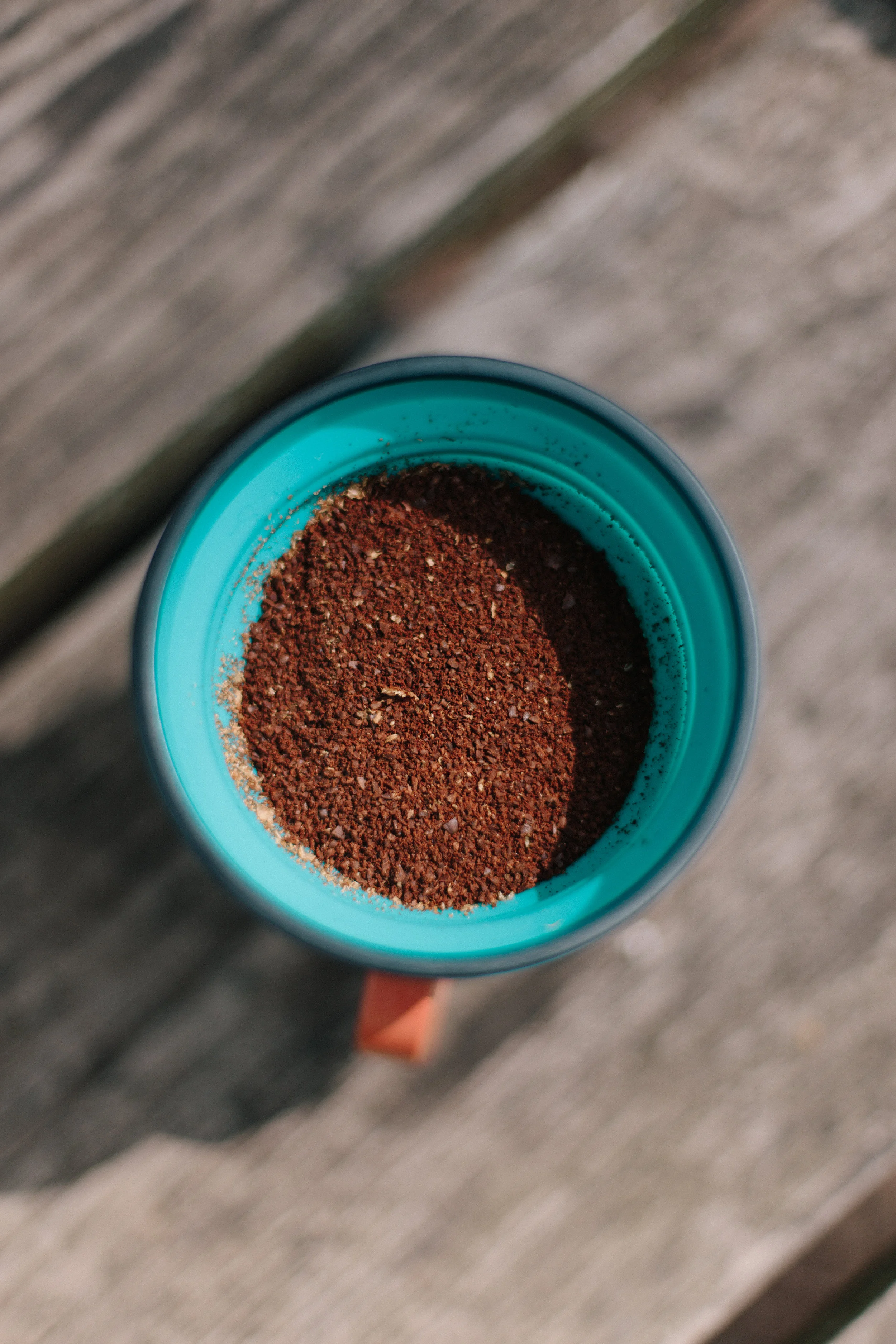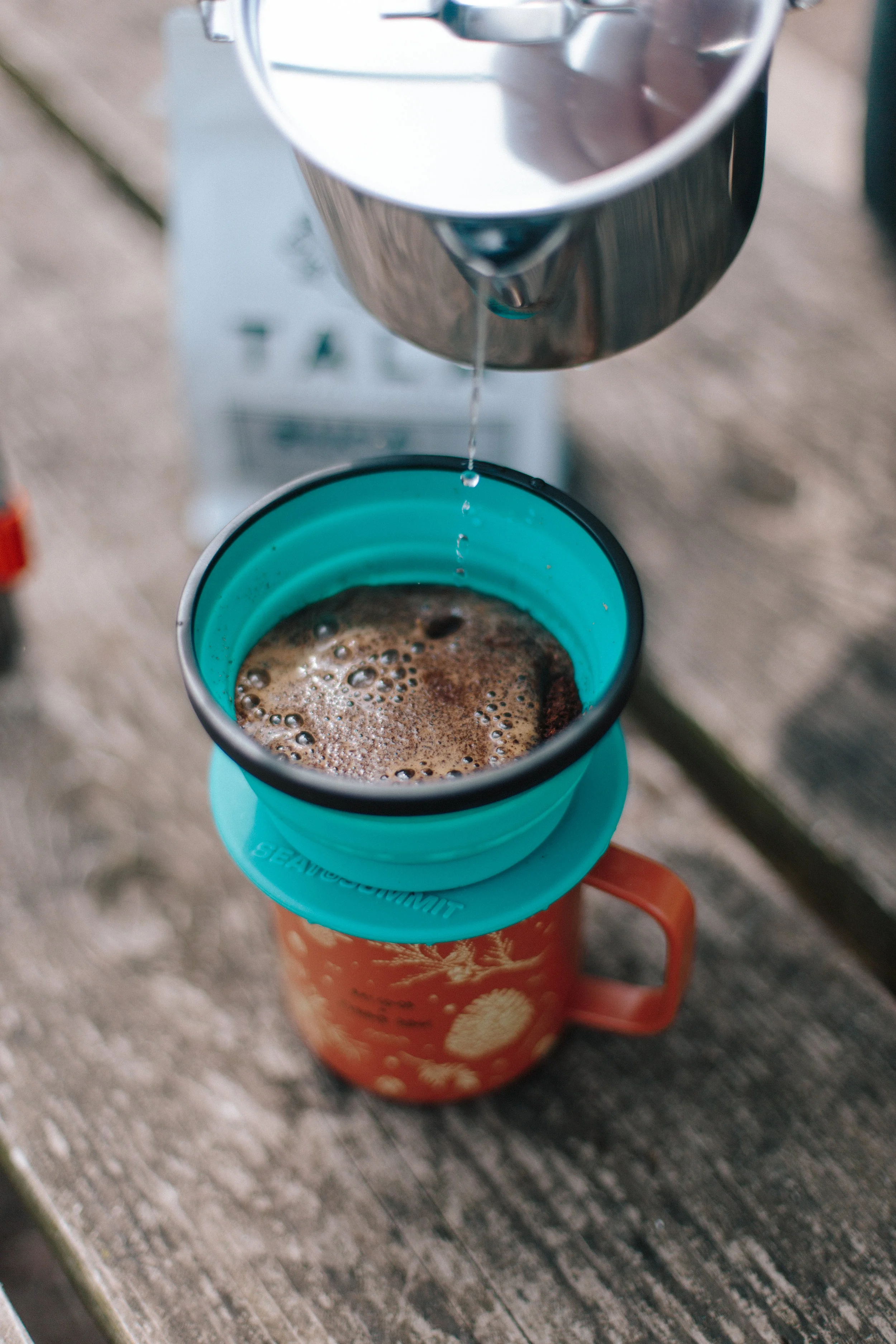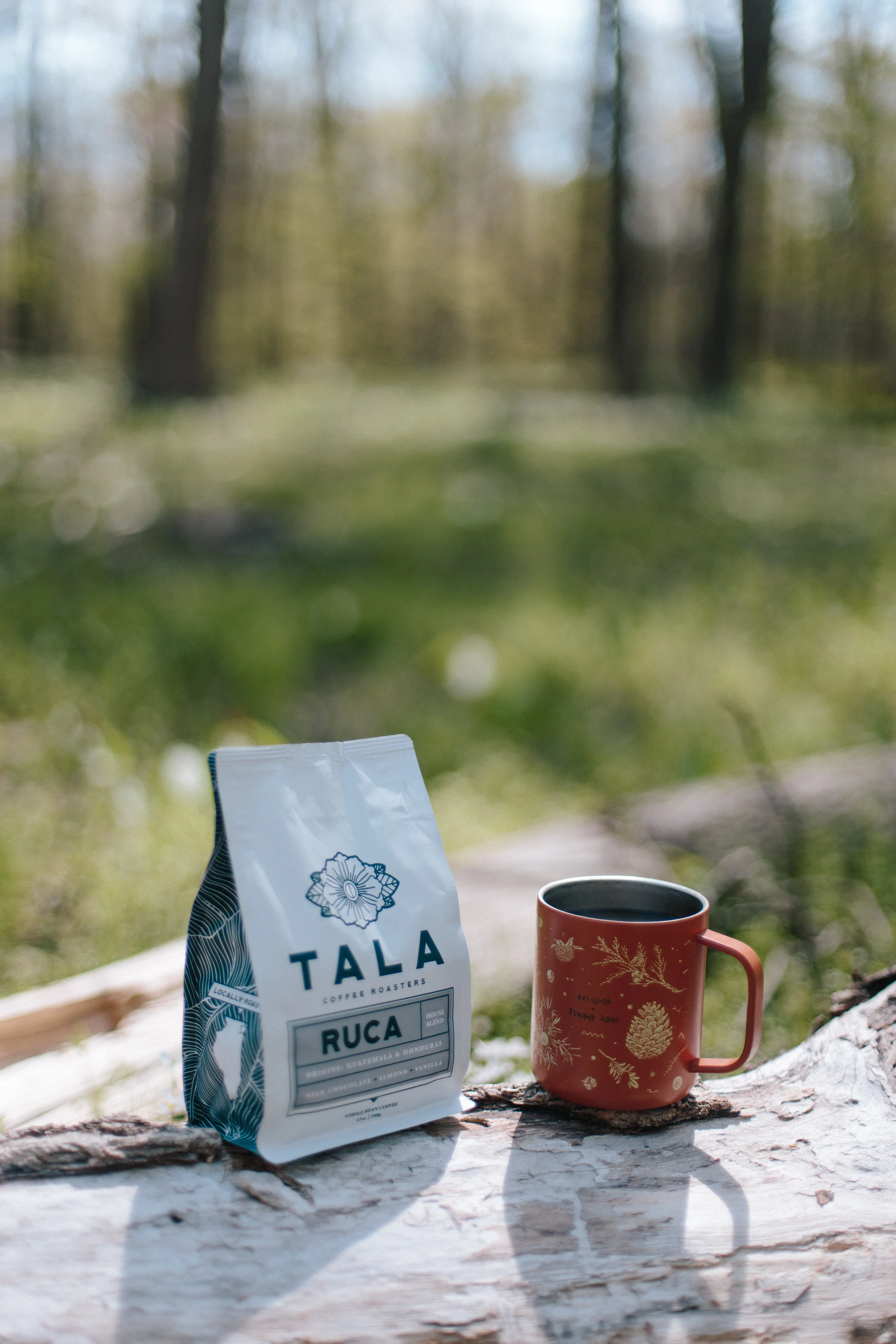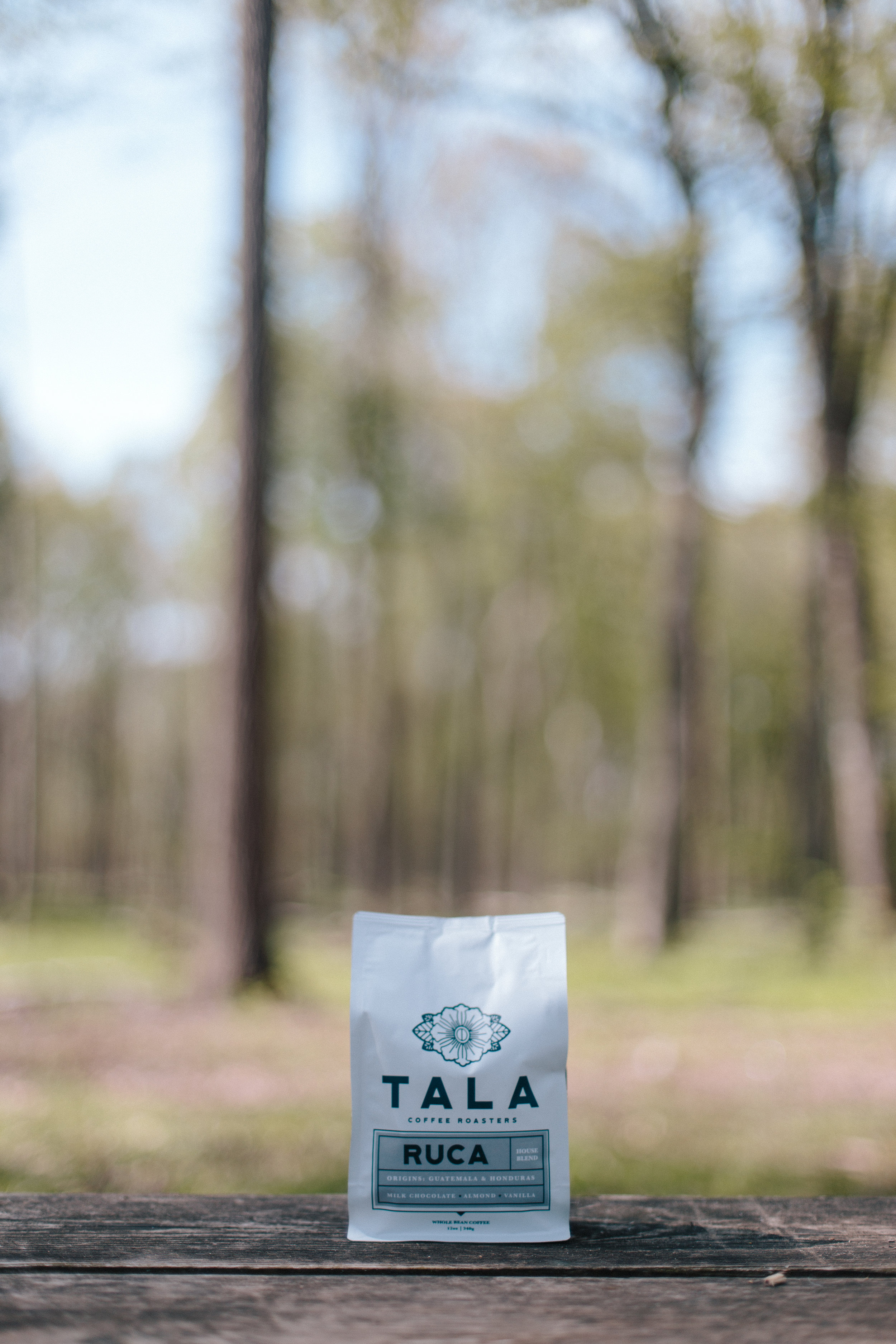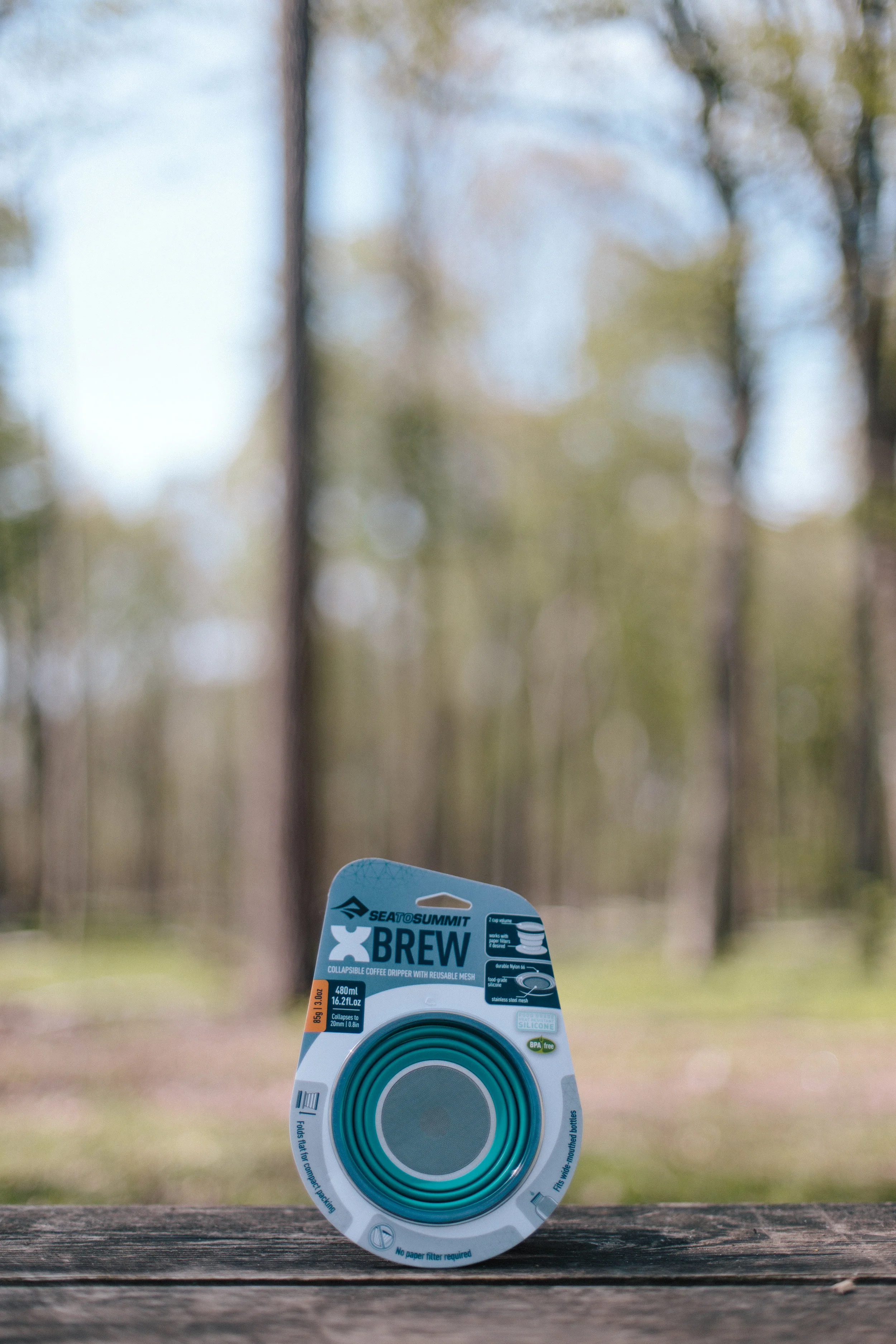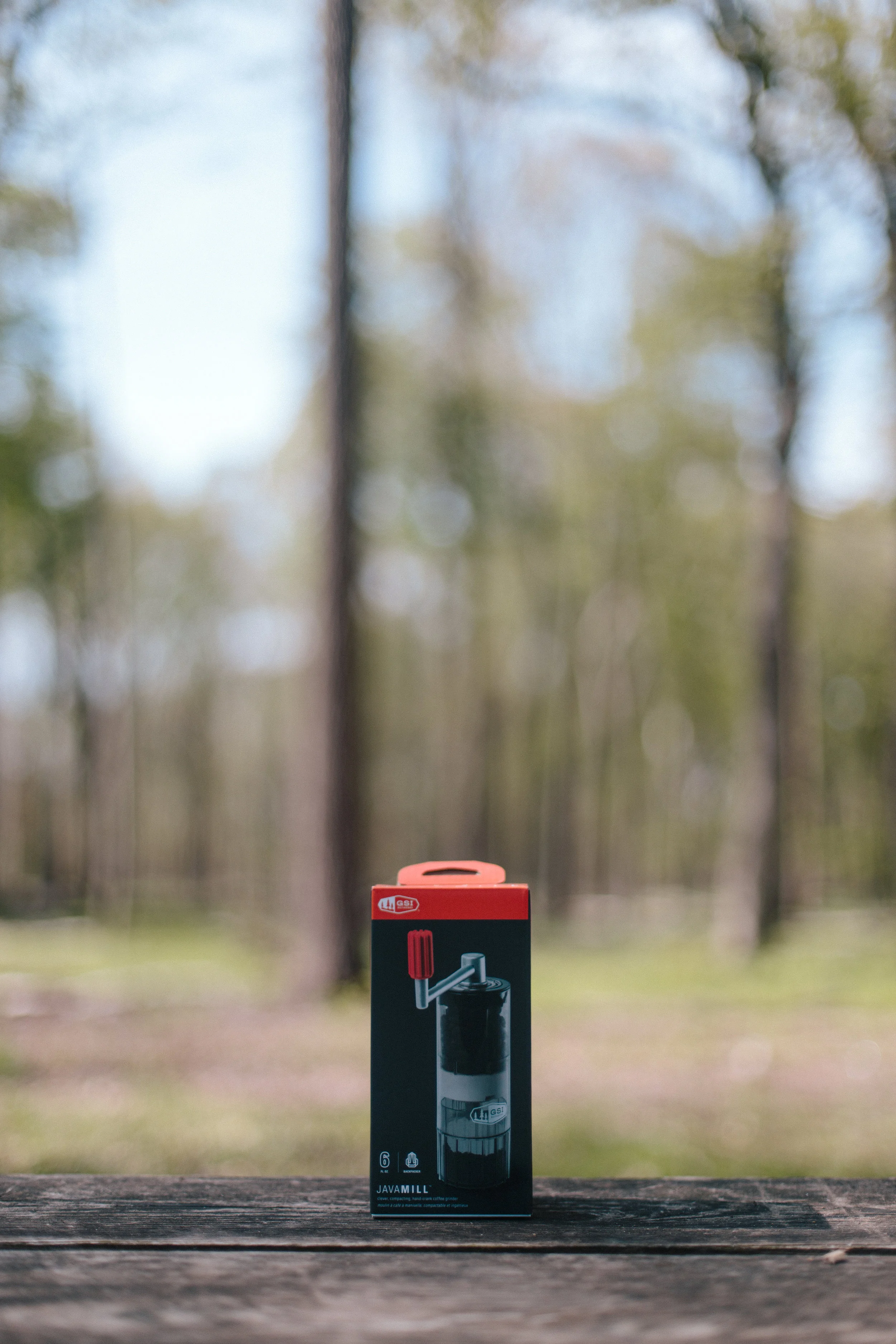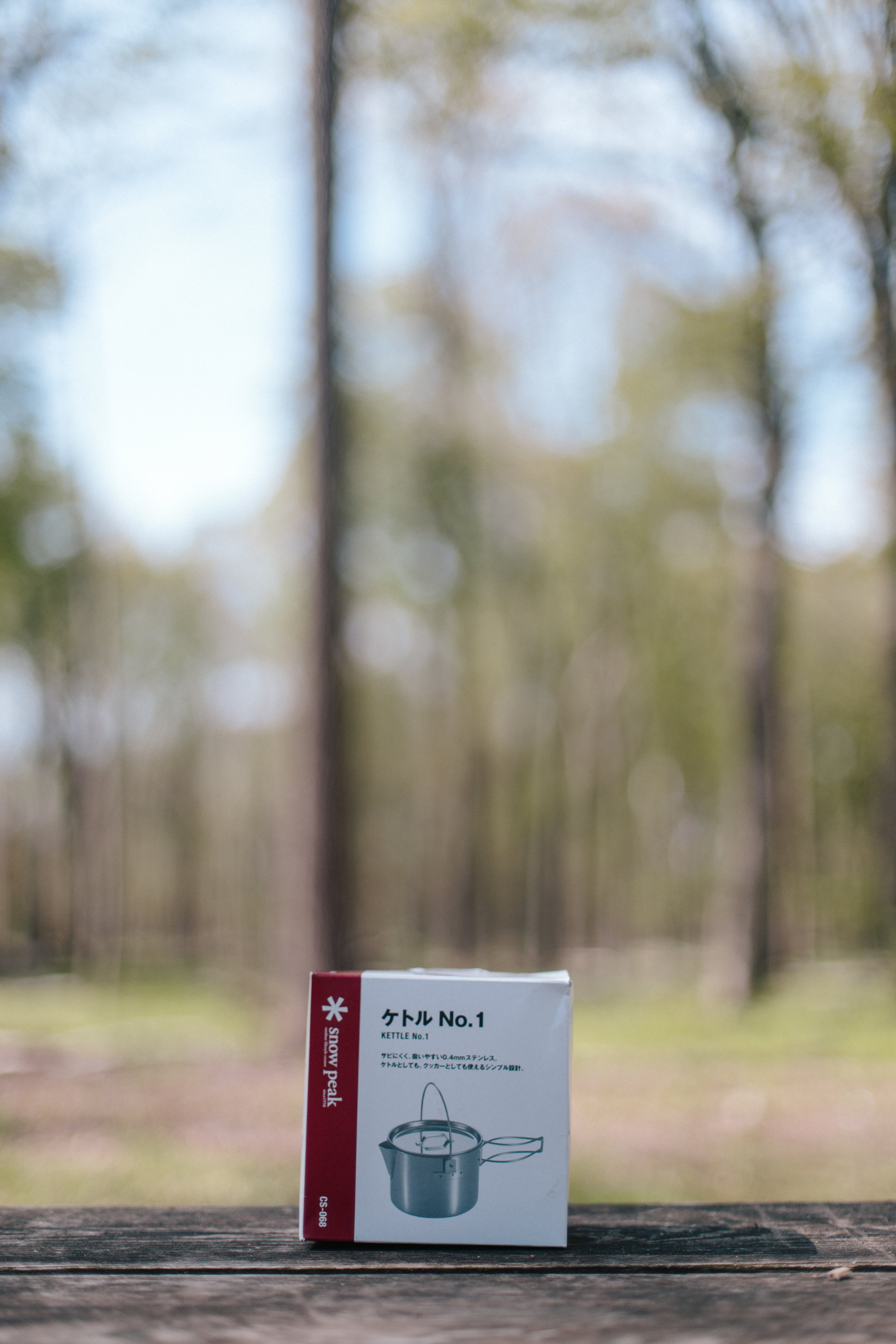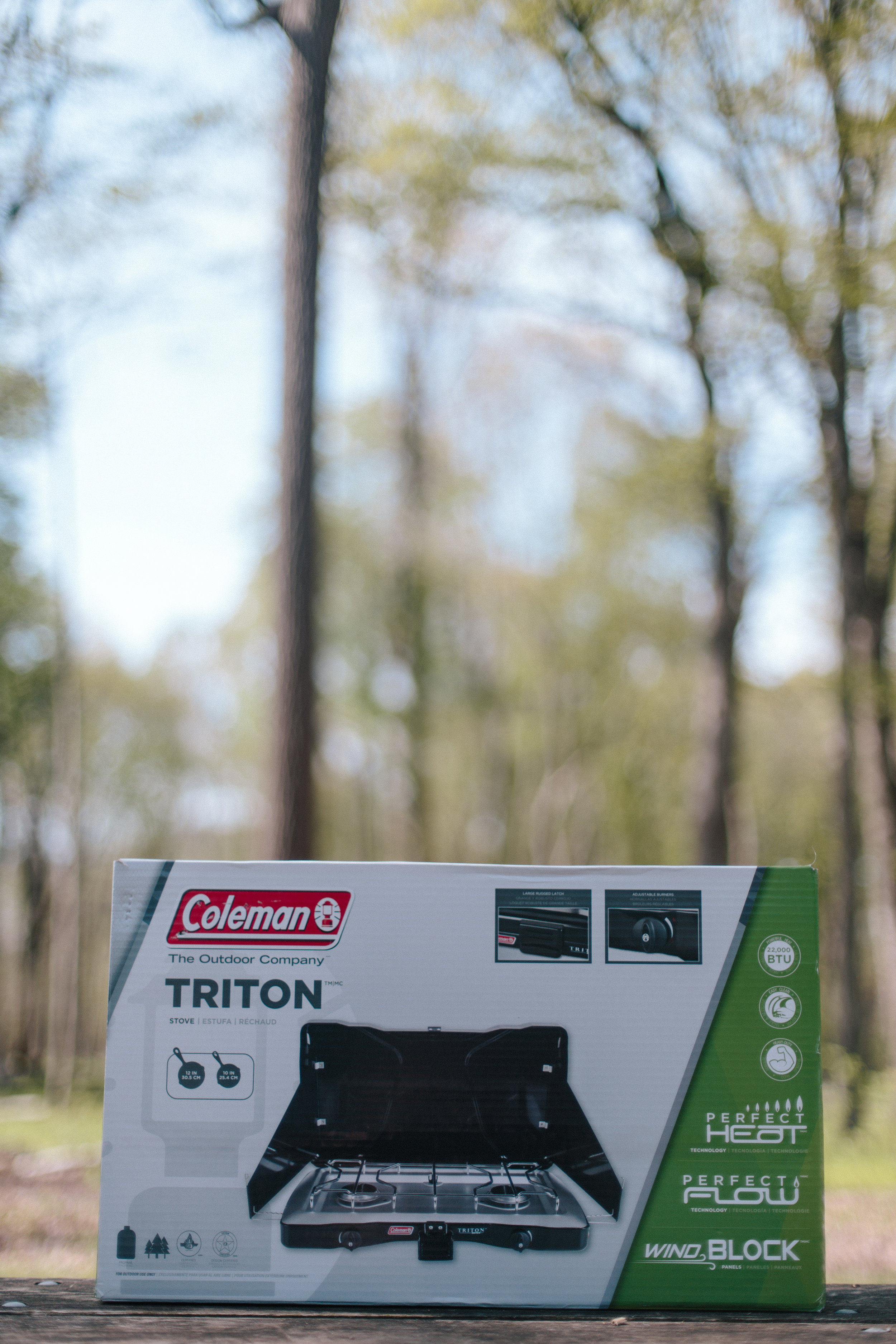Brew Coffee In The Wild
There’s something about making coffee in the wild that really changes it. To me, there’s few more idyllic moments than emerging from a tent early in the morning as the sun is rising and the morning dew is settling to put the kettle on as last nights still-warm coals are poked back into a working flame. Taking the first few sips of the well-earned cup of coffee as the bacon finishes sizzling on the skillet just tastes so much better than it should proportional to the quality of materials. I remember one time I forgot a coffee grinder on a camping trip, so I emptied the pepper grinder (which somehow I had remembered) and used that to grind the coffee beans. As a coffee professional, I would normally cringe at the thought of something so imperfect, but there’s something about the successful brewing of coffee in the wild—however imperfect—that feels worthy of celebration.
Thankfully, coffee equipment for camping has improved leaps and bounds, to the point where it actually is extremely easy to make high quality coffee from anywhere. Even the nerdiest of coffee connoisseurs can be satisfied. We’ve partnered with REI to bring you a comprehensive guide to brewing coffee in the wild. Keep reading for step-by-step instructions as well as tips and tricks from the field. We also are celebrating REI’s 81st anniversary with them on Saturday, May 18th by doing a coffee demo at our local REI store. For details check out our event page.
What to look for in equipment
There are a few things I tend to look for when deciding what to bring on an adventure. Your preferences will be heavily determined by what kind of trip you’ll be taking, of course. Here’s what I look for:
Light and compact
My preferred mode of camping is backpacking, so I’m always looking for what will be light and packable. The less cumbersome, the better! Extra points for items that fold, collapse, or fit into one another. Another huge plus is durable items that you don’t have to worry about getting dropped, bent, burned or dinged up. All my camping gear very quickly gets quite a bit of well-earned character, and as long as it still works well that’s alright by me!
Easy to use
Making anything while camping is a little extra work, of course. That’s part of the charm, right? Nevertheless, having coffee for many of us is a need-it-to-function type of thing, so you want to find equipment that’s easy enough to use. There can be some really complicated percolators that may work, but tend to be a little more difficult to understand.
Good quality
If you’re going to go through all the trouble of making coffee, it has to be at least marginally better than instant coffee to make all your effort worth it. Some camping coffee methods just don’t make great coffee. So don’t just buy the first thing you see. In addition, make sure that you’re starting with good coffee to make the best of the whole thing.
Brew Guide
For this brew guide we are showing you how to brew on a collapsible pour-over. Although most of the information is applicable to all brewing methods, make sure to adapt measurements and specific instructions to your brewing method.
Heat water
Start by setting up your water over your heat source. Depending on your heat source, this could take awhile so it’s good to get this going first. A few tips: on heating water: Use filtered water. Not distilled, not spring water, and not well water. Of course if you have you go a different route, that’s okay, but bringing your own filtered water is going to give you the optimal taste. Whenever I go camping I strap on a few gallons of filtered water to the ol’ pack for drinking, cooking and coffee. It’s an easy way to make sure you’re drinking enough and getting better quality coffee. Cover the kettle. Keep the top on the kettle (or pot, if you don’t have a kettle). This helps keep the water warm and also keeps the ash out of the water if you’re heating it over an open flame.
Measure Coffee
You can either bring a scale (fancy!), a tablespoon, or pre-measure your coffee beans before going. For our recipe, we used 4 full tablespoons of whole bean coffee.
Grind Coffee
For this brew guide, we’re using the GSI Outdoors hand-grinder to make freshly ground coffee. It’s always an option to pre-grind your coffee, but it will retain taste much better if you grind it just before brewing. For our pour-over brewing method, the coffee should be ground to a coarse grind size. We are using the pour-over filterless, but if you choose to use a filter, you should grind the coffee a little finer.
Level Bed
Pour your ground coffee into the brewer and tap the sides to level out the bed. This will provide a more evenly extracted flavor. If you’re using a filter, pour a little hot water over the filter before you pour the grounds into the filter (this helps eliminate the papery taste of the filter).
Start Bloom
Pour a little water evenly over the coffee grounds, just enough to wet the surface of the coffee and no more. Then wait about 30 seconds. This is called “the bloom,” because it is where all the gasses held within the coffee grounds are activated and released. You can actually watch the surface of the coffee raise like a mound and take a breath.
Finish Pouring
Continue to pour water as evenly as possible in clockwise circular motions until you fill the dripper.
Draw down and Enjoy!
Now you just wait for the water to finish drawing down. Once it’s done, you can remove the dripper and enjoy!


